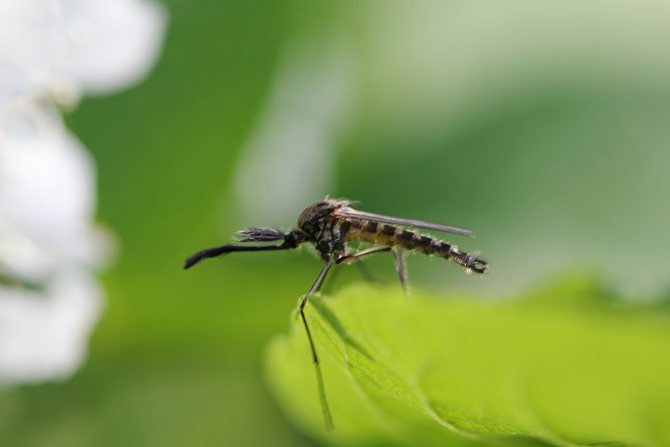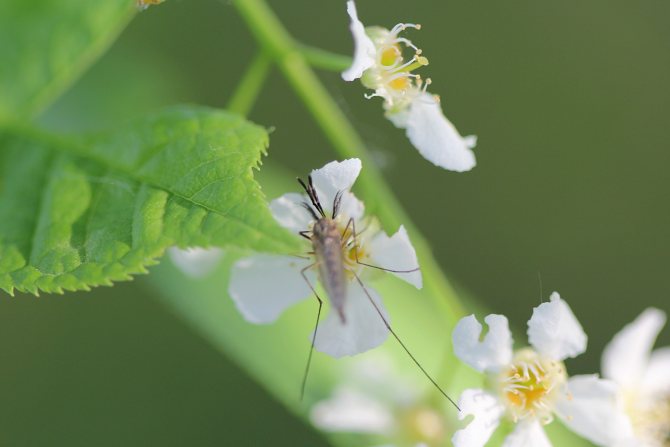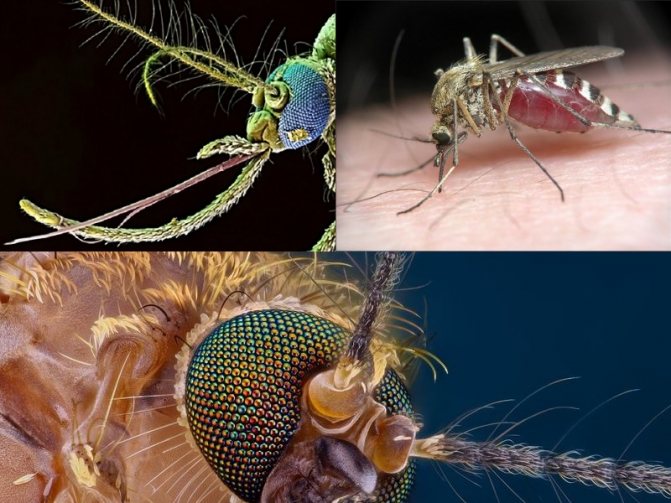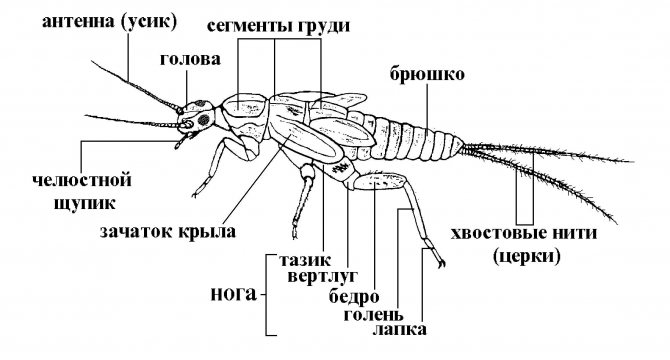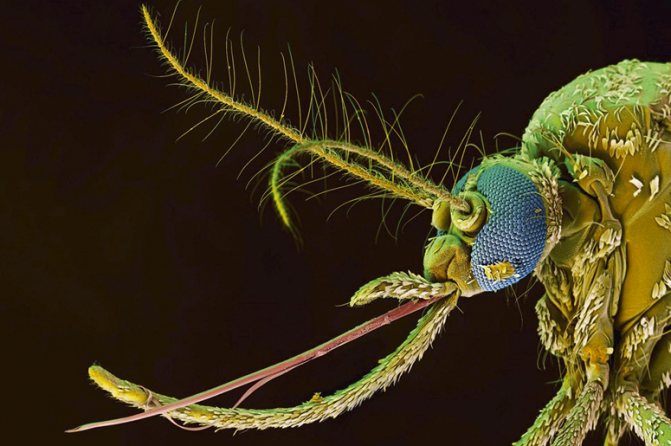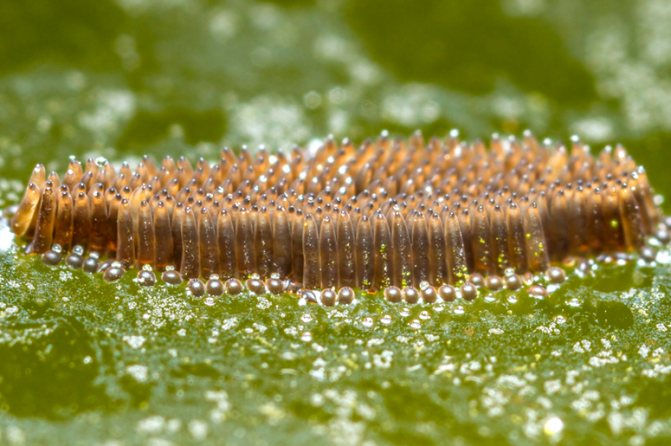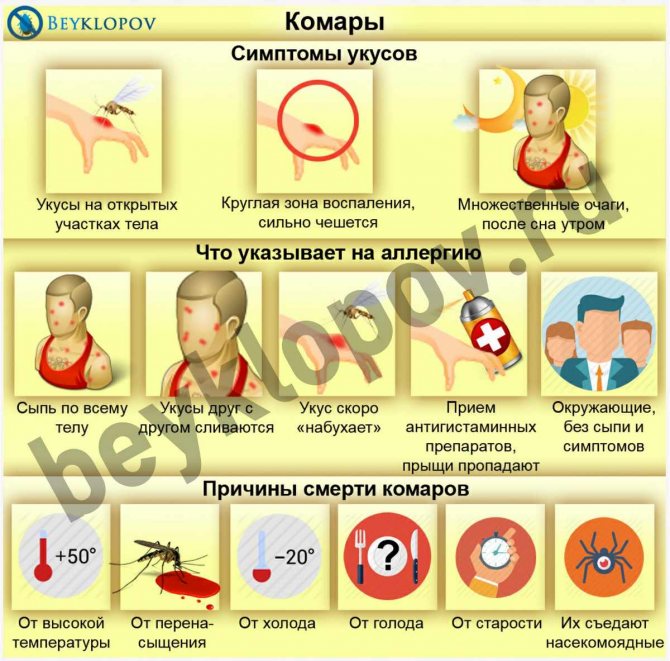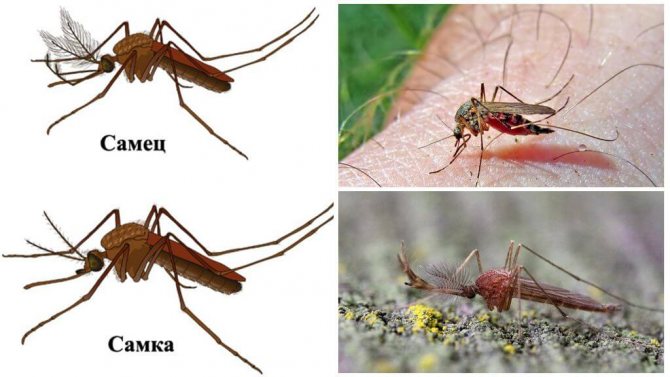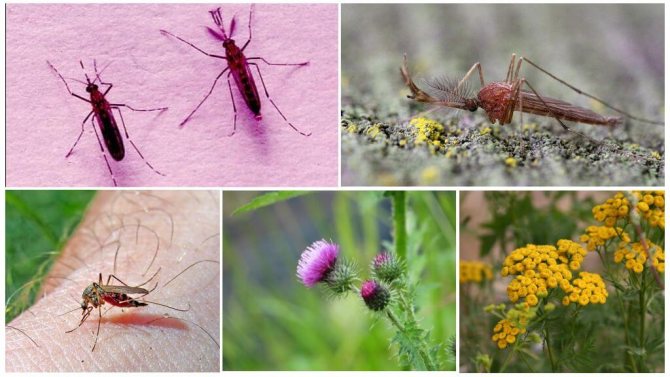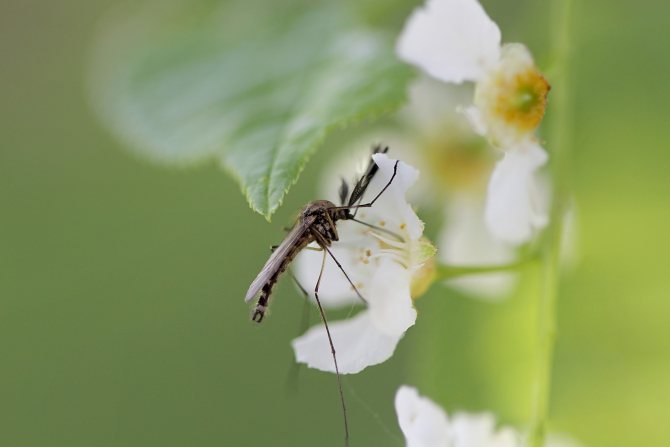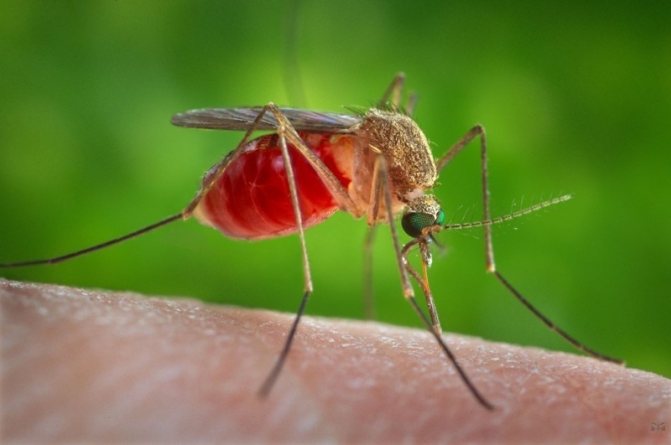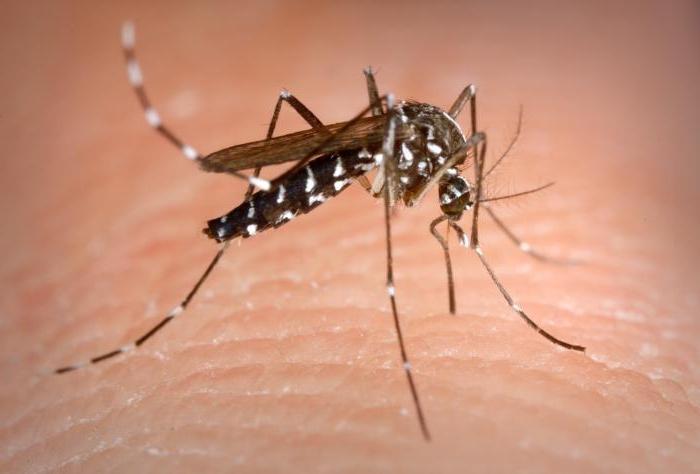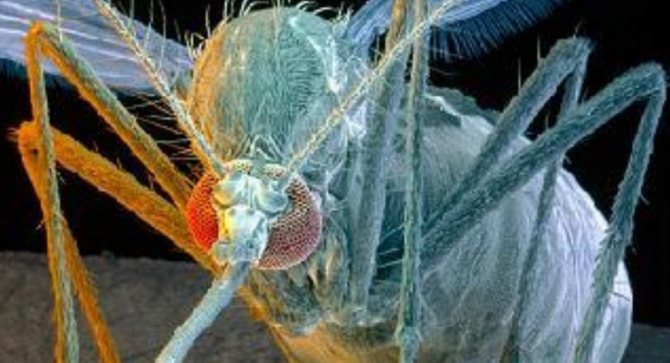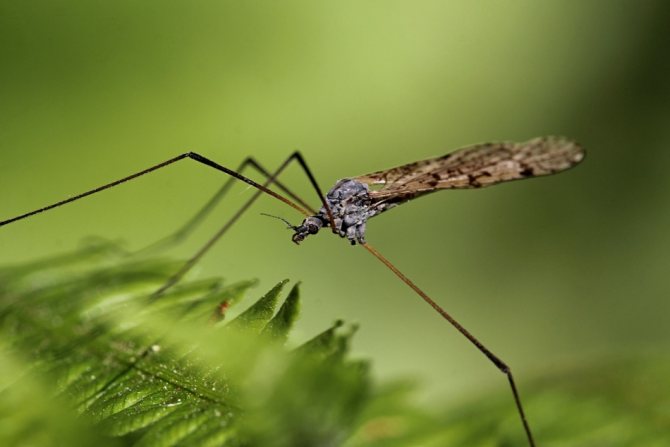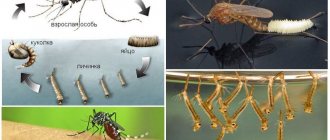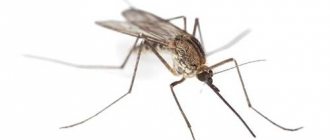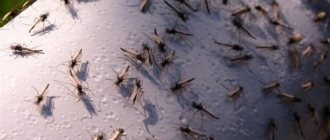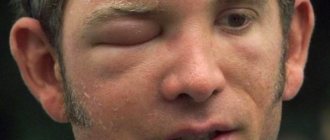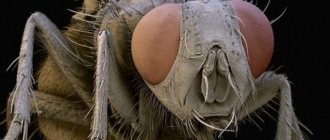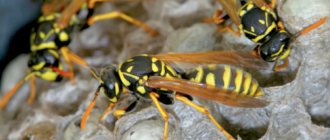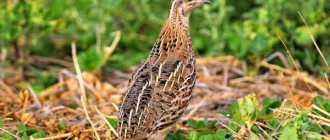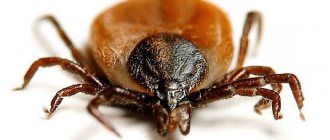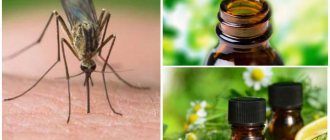The common mosquito is a bloodsucking insect, which is most often found in river valleys or in swampy lowlands, in the forest zone. The average life expectancy depends mainly on the air temperature - it is about 1.5-4 months. Males have a much shorter lifespan than females.
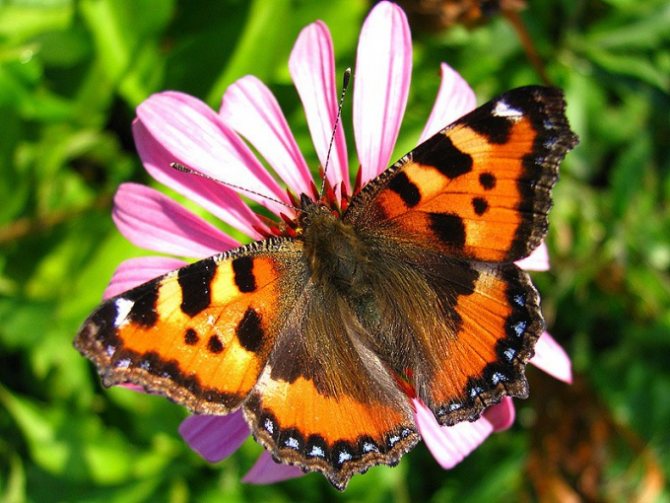
A little about the diet of a mosquito
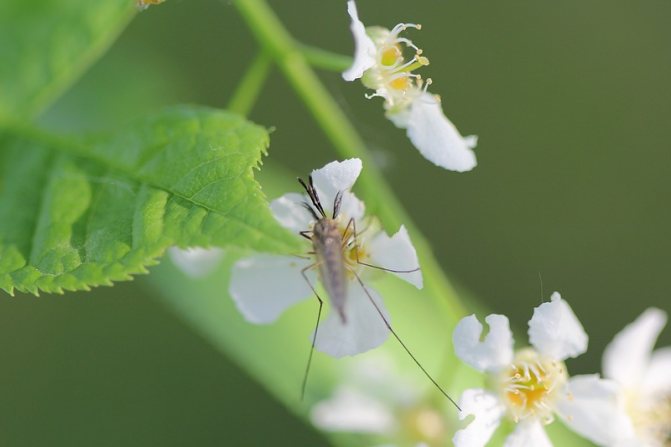

Having hatched from an egg, future male mosquitoes feed on protozoa and plant organics, filtering the water. It is the larva that accumulates most of the nutrients for the life cycle. Some species maintain such a diet at all stages of development, and some, having passed the larval and pupa stages, go hunting.
Proteins, fats and iron, which blood contains, are needed for the formation of eggs, and for the nutrition of the female herself, there are enough carbohydrates extracted from the nectar of plants. Since the male does not lay eggs, he does not need to hunt and the external differences between males and females emphasize this fact. A mosquito bite is possible thanks to the thinnest sting that can pierce the skin. In males, instead of a sting point, a soft proboscis, but thin antennae, similar to down feathers, develop.
How long does a mosquito live
The annoying squeak of little pests spoils the pleasure of the long-awaited summer. The situation becomes especially unbearable in rural areas or just near woodlands. It becomes interesting: how long does the parasite live? There is no exact answer, because the lifespan of a pest depends on a number of factors.
- The sex of the insect. First of all, it is worth learning a simple fact: males live exactly half as much as females.
- Temperature. It is worth talking about this in more detail, because this information can help in confronting the squeaky enemy. So, the higher the air temperature, the less the insect will live. At a temperature of about 20 °, the female will live about 42 days, and with a decrease to 10 °, the life span will increase to 115 days. In the case of a male, divide the number by two.
- Food. The parasite is afraid of both hunger and oversaturation. It is a myth that a mosquito dies immediately after being bitten by a person. One mosquito can bite a person up to 8 times in a couple of hours. By the way, only females feed on blood, males - exclusively on nectars.
Features of the diet of the male mosquito and its preferences
Lush antennae are not at all decoration, since many bloodsuckers are pollinators at the same time. Feeding on nectar, the mosquito copes with the task of transferring pollen, collecting it on the antennae-tassels. Mosquitoes of both sexes have a sensitive sense of smell, but if the female is better adapted to recognize the smells of donor animals, then the male delicately feels the aromas of flowers.
Therefore, plants with a pungent odor:
- mint;
- thyme;
- cloves;
- catnip;
- bird cherry
serve as natural repellents. By enhancing natural odors that are unpleasant for the mosquito, humans have invented compounds that scare off females as well.
Mosquito bite
To find a potential victim, the female mosquito uses several methods of orientation at once. It recognizes the heat emanating from the person, the carbon dioxide exhaled by him and the smell of sweat. This allows the insect to navigate with great accuracy even in the dark. In addition, it is believed that a mosquito that is crushed during a bite also releases substances that attract other insects of its kind.
The redness that occurs at the site of the bite is not due to damage to the skin, but due to substances contained in the mosquito's saliva. It contains components that prevent blood clotting, and often various pathogens. From a scientific point of view, it is not entirely true that mosquitoes suck blood: they do not have organs that allow them to suck. After the proboscis of a mosquito pierces the skin, blood begins to flow into it under the influence of its own pressure present in the vessels. If you do not use any medicines, itching and redness of the skin may appear for more than a day. In addition, in some cases, substances contained in mosquito saliva cause severe allergic reactions that require medical attention.
Why mosquitoes are dangerous
Many people perceive mosquitoes as annoying insects that bother and interfere with sleep or rest, but do not pose a serious danger. But in fact, mosquitoes are often carriers of infectious diseases, some of these diseases are deadly. The microorganisms that cause the disease can be contained in the saliva of the mosquito, which enters the human bloodstream at the site of the bite. These can be viruses or microscopic parasitic organisms.
According to official statistics, more than a million people die annually from diseases carried by mosquitoes. It is important to understand that this problem affects not only the regions that are primarily associated with diseases such as malaria or dengue fever - Africa and South America, but also other continents. Cases of transmission of various infections by mosquitoes are also noted in Russia.
Since the proboscis of a mosquito is in direct contact with blood, this insect can theoretically be a carrier of the human immunodeficiency virus. However, modern epidemiology estimates this possibility as extremely unlikely.


Mosquito control methods
To avoid the spread of diseases, to make tourist resting places more comfortable or to prevent damage caused by mosquitoes to pets, the fight against these insects should be carried out simultaneously in several directions. First of all, you need to eliminate the places that are favorable for the breeding of mosquitoes. In urban conditions, it is necessary to cleanse the basements, in nature - regular monitoring of the cleanliness of reservoirs, improving the condition of their banks, as well as, if possible, draining swamps. Biological methods are also used, such as breeding fish that feed on mosquito larvae in reservoirs.
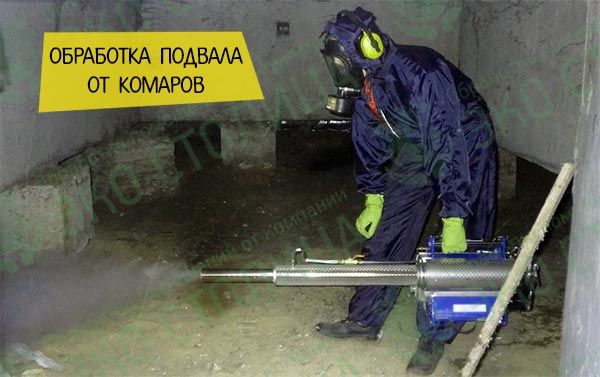

In everyday life, the main way to combat mosquitoes is to eliminate them or scare them away. For this, both folk and modern means are used. It is known that mosquitoes do not tolerate the smell of certain plants and chemicals, which is what people use. To protect against mosquitoes, mosquito nets, canopies and other structures are used to prevent mosquitoes from entering the room. Sometimes they try to influence harmful insects with the help of high-tech means - mosquito lamps and ultrasonic repellents. In general, complete eradication of mosquitoes in a building or site requires a multi-approach approach.
Eating plant sugars for flight
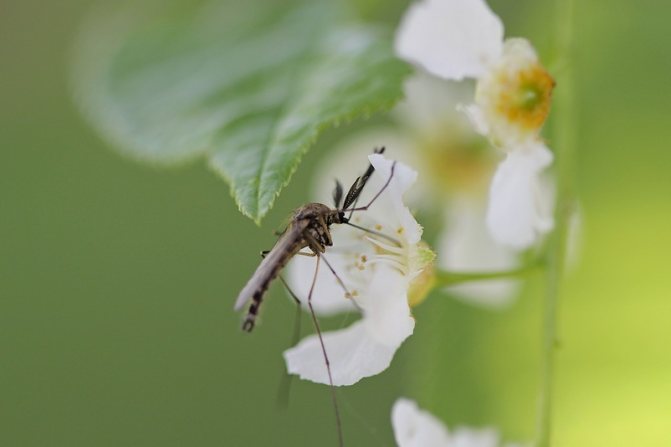

At the stage of egg formation, the future mosquito receives a supply of necessary proteins and lipids for full development, therefore, in adulthood, the insect only maintains functioning, but does not grow. The easiest way to get energy from sugars, and therefore all mosquitoes are sweet tooth. Nectar, which is almost entirely composed of sugars, is readily degraded to glycogen. Therefore, for the life of mosquitoes, carbohydrate metabolism is sufficient.
Male nutrition
Mosquito nutrition varies significantly depending on the sex of the insect. The male's oral apparatus is not equipped with piercing teeth, so he does not consume blood, remaining a "vegetarian".
The basis of the mosquito diet is made up of plant sugars, honeydew, pollen, flower nectar and, of course, human or warm-blooded animal blood. These products help insects to actively reproduce.
What male mosquitoes eat: they do not have parasitic nutrition. Males are content with plant food, nutrients obtained from juices and nectars, which are quite enough for them for full-fledged life.
The favorite food of male mosquitoes is nectar - a sugary liquid secreted by nectaries, that is, glands located in the calyx and at the base of the sepals of the flower.
After mating, female mosquitoes become aggressive and begin to search for a warm-blooded prey that they need to bear offspring. The diet of males does not change, he feeds only on vegetable juices, sugars and nectar, posing no danger to humans or animals.


Nectar has a high calorie content, due to which the insect's body is saturated with a sufficient amount of energy
Why does a male mosquito not drink blood if it allows him to live longer
Indeed, obtaining "building material" for cell renewal could extend the life of an individual. However, during this time, the female will simply repeat the reproduction cycle several times and increase the offspring. The male's primitive metabolism is not designed to process protein food, and the proboscis is not capable of piercing the skin. Thus, the necessary balance is maintained between individuals of different sexes, while saving resources for reproduction. However, a vegetarian diet provides mosquitoes with a fairly long life in the insect world, if all the dangers of the forest are avoided.
What do females eat
The basis of nutrition for females is the nectar and sap of plants. Also, for the continuation of offspring, they need blood and its components. Their oral apparatus is adapted exclusively for piercing the skin of warm-blooded animals and humans. In zoology, this "adaptation" is called ectoparasitism. The female mosquito receives nutrients from the victim's blood. It contains lipids, proteins, carbohydrates, which are an important building material for the production and laying of eggs. Carbohydrates are also needed to maintain energy balance.
If you carefully consider the anatomical features and differences, you can notice a significant difference in the structure of the oral cavity of the male and female. Females have a complex organization. The skin is cut with the upper jaw. At the same time, movements are made and the lower one. After that, the female mosquito sucks blood, injects a special anticoagulant enzyme. It prevents blood from clotting and causes itching and, in some cases, even allergies. The danger lies in the fact that with saliva, the female can transmit infections that she carries.
Why are mosquitoes dangerous, why is it necessary to fight mosquitoes?
By themselves, like animals, mosquitoes, in principle, are not particularly dangerous, however, these insects are carriers of serious ailments.
- These bloodsuckers are primarily dangerous because they carry a disease such as malaria. It is important to understand that only malaria mosquitoes carry this disease.
- Also, bloodsuckers can "present" a person by biting him, various types of fevers.
- In addition, insects are carriers of encephalitis, a serious disease that is very dangerous not only for health, but also for human life.
- Mosquitoes can also carry some infectious diseases.
What do mosquitoes eat in a swamp
It is known that females drink mainly lymph. In the swamps, they choose food sources such as frogs, birds or fish.
What a mosquito eats in a swamp besides blood is not known to many. So, the centipede prefers to eat humus or algae. Adult mosquitoes consume plant juices or nectar.
Here's what different types of mosquitoes eat in the swamp:
- Swamp girl. The meadow feeds on plant nectar, the remnants of rotting algae.
- Zvonets. Dergun mosquito also eats vegetation. The insect lives in the reeds. The color of the pest is green-yellow or dark brown.
- Karamora. The long-stem does not drink blood, but feeds on vegetable juice or nectar. The larvae of caramora have the greatest appetite, which eat algae, roots, young vegetation in water and on land.
Chest
If we talk about the general appearance, then this part looks quite massive, but having studied it in more detail, you can understand that this is not entirely true. It includes 3 segments that are unevenly developed.
The strongest and most developed middle part, it contains all the flying muscles, and also the wings are attached. In addition to being responsible for flight, the middle part also provides respiratory functions.
The front part includes a fairly long insect neck. The posterior part, the metanotum, has another spiracle and is also responsible for the respiration of the insect, but, unlike the middle segment, it is rather poorly developed.


Each segment has a pair of legs. The paws, in turn, also consist of segments, of which there are 5 on each limb. On the last segment there are suction cups and claws, which enable the mosquito to adhere to absolutely any surfaces and perfectly hold on to the ceiling.
Interestingly, now mosquitoes have a slightly different body structure, previously they had 4 wings, but now there are only 2 remaining. True, now they have remnants-halteres from the second pair of wings, which emit this incredibly annoying squeak. By the way, only females squeak, as well as bite.
They have wings of an oval elongated shape, transparent in color. They consist of veins and connecting membranes, the plates are covered with very small scales. Most of the individuals have transparent scales, but there are also those in which they have different color shades. If colored scales accumulate in one place, a colored spot is formed.
In mosquito species that have black and green body colors, colored scales accumulate in such a way that a pattern is formed. It is hard to believe that these small insects are waving at a frequency of up to 1000 times in 1 second. Some scientists argue that the wings also contain nerve endings, but in this case they act as sensory organs.
Does a mosquito have a brain, a heart, what organs are there, how many teeth, how does a mosquito squeak, breathe?
Mosquitoes, like any other living creatures, have a certain body structure and internal organs.
- Bloodsuckers have a heart, represented by a muscular tube. The blood of these insects is colorless.
- Regarding the brain, it must be said that it also exists. It is presented in mosquitoes by the supraopharyngeal ganglia. They are divided into 3 parts and form the forebrain, midbrain, and hindbrain. Each part of the brain performs its own function.
- Many people think about whether bloodsuckers have teeth. Mosquitoes have teeth, moreover, they play an incredibly important role in the life of this insect. After all, it is with the help of the teeth that the mosquito bites through the skin of the donor. However, they have an unusual appearance for us - stabbing bristles. An adult mosquito can have about 50 of them.


Mosquito structure
- The insect squeaks with nothing more than wings. Due to the frequent flapping of thin wings, such a sound unpleasant to our ears is formed.
- Unlike humans, all insects breathe through the trachea, not the lungs, since they simply do not have the latter.The tracheas of bloodsuckers are represented by tubes through which air passes and which come out on the sides of the body as a kind of openings - breaths.
- Generally speaking, these insects have a nervous, oral apparatus, excretory organs, a heart and, accordingly, a circulatory system, genitals, and a respiratory system.


